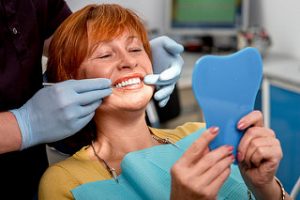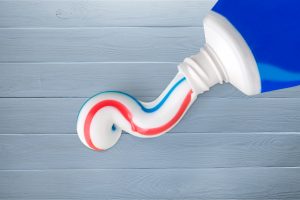
Despite the generalized notion that people should visit a dentist bi-annually, I am more a proponent of individualized frequency recommendations based on a few factors. We are not all the same; therefore, each of us has our own specific needs.
Results from a recent Gallup-Healthways poll of 355,334 Americans indicate that more than one-third of the population, 34% to be exact, did not visit a dentist last year at all. Over 50% of the population said they visited the dentist one time or less last year.
In a study reported in The New York Times and other major media, a report by the Journal of Dental Research indicates “little evidence supports biannual preventive care for… (Read More)

 Do your gums bleed when you brush or floss? This isn’t a toothbrush or flossing problem, it’s the first sign of periodontitis. Around 50% of American adults suffer from mild, moderate, or severe periodontal (gum) disease. The first stage of this disease is called gingivitis. Keep reading to learn the differences between gingivitis and periodontitis as well as how a mild health issue like bleeding gums can progress into something much worse.
Do your gums bleed when you brush or floss? This isn’t a toothbrush or flossing problem, it’s the first sign of periodontitis. Around 50% of American adults suffer from mild, moderate, or severe periodontal (gum) disease. The first stage of this disease is called gingivitis. Keep reading to learn the differences between gingivitis and periodontitis as well as how a mild health issue like bleeding gums can progress into something much worse.






 If there’s one thing about modern life that’s both a blessing and a curse, it’s all the choices we have. On one hand, it seems great that we can choose from so many options for every product at the grocery store. On the other hand, it can be confusing and overwhelming to make a decision. When it comes to all the toothpaste out there, most people would be hard-pressed to name each type, let alone decide which one is best for them. That’s where the expertise of a dentist comes in. Keep reading to find out what each toothpaste formula does and whether it would be right for you!
If there’s one thing about modern life that’s both a blessing and a curse, it’s all the choices we have. On one hand, it seems great that we can choose from so many options for every product at the grocery store. On the other hand, it can be confusing and overwhelming to make a decision. When it comes to all the toothpaste out there, most people would be hard-pressed to name each type, let alone decide which one is best for them. That’s where the expertise of a dentist comes in. Keep reading to find out what each toothpaste formula does and whether it would be right for you!